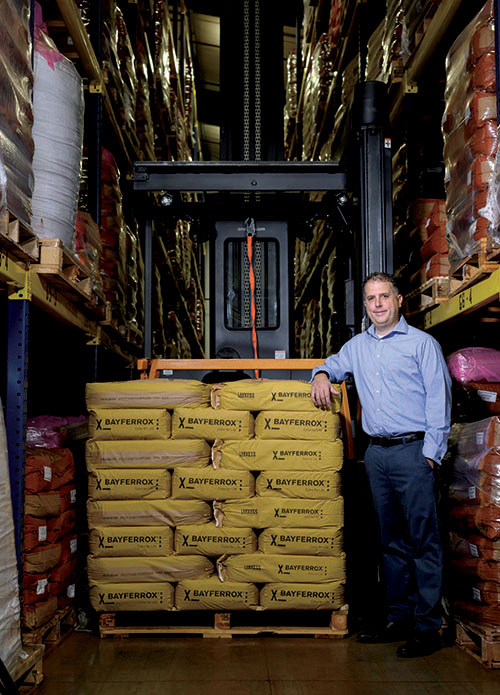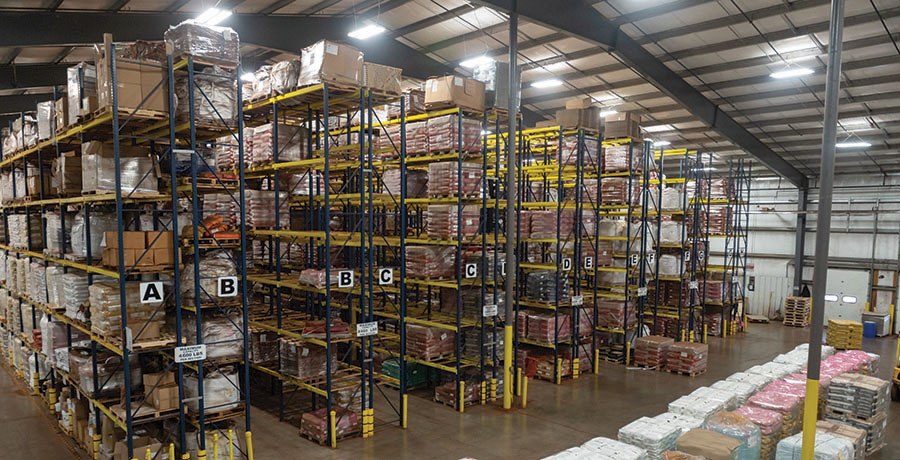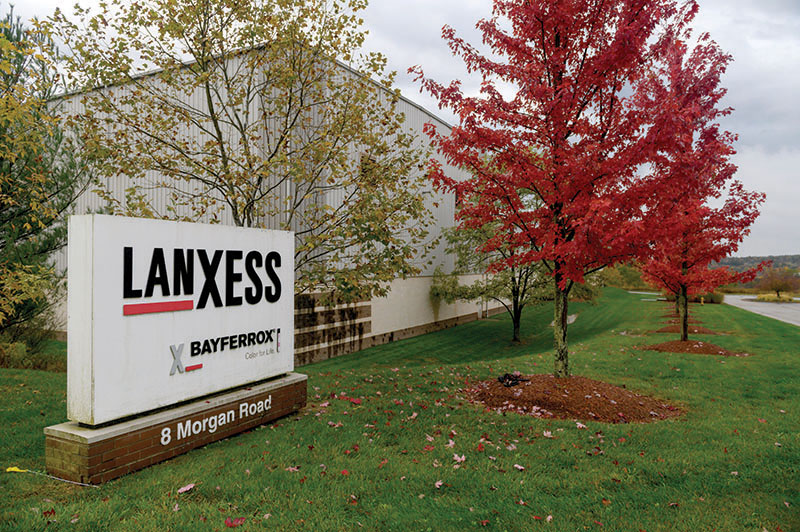LANXESS: Embracing the future one step at a time
How one manufacturer leveraged its long-term managed transportation relationship to gain access to top-of-the-line transportation management systems, carrier options, real-time cost data and end-to-end supply chain visibility.
Given the opportunity, most organizations would prefer to focus on what they do best and leave the non-core responsibilities for reliable, reputable third parties to handle. In the real world, however, most companies have to cover myriad functions that they don’t really have the resources, expertise, or skillsets to manage properly.
When global chemical producer LANXESS realized that managing its North American logistics and transportation in-house was becoming too burdensome, it sought out a managed transportation provider to help fill in some of the “black holes” in its supply chain.
For LANXESS, “core business” means developing, manufacturing and marketing chemical intermediates, additives, specialty chemicals and plastics—not managing the movement of its freight throughout North America. “We invest in production and manufacturing,” says Eric Smith, director of logistics, “and not so much in logistics and related systems.”
With 11 different business units in North America, LANXESS ships products and runs warehouses across the continent. It also imports materials from overseas that it distributes within North America—a process that incorporates both transportation and warehousing. To get its products to its customers, the manufacturer utilizes a combination of rail, International Organization for Standardization (ISO) tanks, bulk trucks and package trucks—all of which are outsourced because it doesn’t own its own fleet.
Rewind the clock back about 10 years and LANXESS, which has about 15,400 employees in 33 countries and is represented at 60 production sites worldwide, was procuring its own freight, managing its own transportation routing through its own transportation management system (TMS), and was working with a third-party provider to audit and pay its carrier freight bills.
This arrangement created some major visibility gaps for the manufacturer, and particularly in terms of aligning freight audit and payment functions. A LANXESS business unit that needed specific customer’s freight expenses, for example, had to wait while the data was gathered, reviewed, and disseminated. The resultant reports were spreadsheet-based and included scores of tables and spreadsheets that weren’t especially user-friendly.
“Due to a communication gap, figuring out how much we were actually spending on freight was somewhat of a black hole,” says Smith. “It was taking a lot of data cleansing and back-office work to figure out our true transportation costs.”
Handing over to a third party
Producing and transporting chemicals through the supply chain safely and efficiently can be complex, especially when moving hazardous cargo. For example, chemical logistics requires detailed security plans, specialized equipment, a network of qualified, reliable suppliers and full supply chain visibility.
 “Based on the hazardous nature of the commodities we’re shipping, we need to have transportation security plans in place for certain products,” says Smith. Other key requirements include hazmat certifications and tanker endorsements for drivers; the right personal protective equipment (PPE) for those operators; and the proper vetting of carriers to ensure that they understand the hazardous nature of the chemicals.
“Based on the hazardous nature of the commodities we’re shipping, we need to have transportation security plans in place for certain products,” says Smith. Other key requirements include hazmat certifications and tanker endorsements for drivers; the right personal protective equipment (PPE) for those operators; and the proper vetting of carriers to ensure that they understand the hazardous nature of the chemicals.
“A lot of times, drivers are required to get up on top of the tank trucks and hook hoses up to the equipment,” Smith explains, “so it’s critical that we have good carriers that are vetted and that understand the nature of the product in order to ensure everything is done safely.”
Ready to offload its non-core logistics and transportation operations to a reliable third party, LANXESS considered about nine potential partners. Only two of them focused on the chemicals industry, and Odyssey Logistics & Technology was one of them. “The rest were more involved with consumer goods and other commodities,” says Smith. “Based on the special nature of chemical transportation, and the precautions that must be taken with these shipments, we had a higher comfort level with Odyssey.”
For the implementation, LANXESS put together a project team and brought in a consultant that was familiar with SAP—the manufacturer’s ERP system—and Odyssey’s TMS platform. That consultant proved especially valuable during implementation, particularly when it came to sharing information and requirements across SAP and the TMS.
“We got a very customized solution that fulfilled all of our needs,” says Smith. “Implementation was very smooth and we didn’t miss a beat when we flipped the switch to turn on our managed transportation solution.”
Continuous improvement
Today, when a LANXESS business unit calls to find out freight costs for a particular customer, Smith’s team can pull up that data and provide it within minutes, and with minimal effort. Using filters for a certain time period, for instance, it can review all of a customer’s shipments during that time, and see all of the costs—from the line haul to the fuel charge to any accessorial charges.

With 11 different business units in North America, LANXESS ships products and runs warehouses across the continent.
“We can then turn around and provide that level of detail to the business unit,” says Smith, “which uses it for general decision making, including the freight component of pricing decisions.”
Because it now has high visibility into its freight spend, LANXESS has also improved its freight payment reporting processes. When it imports ISO tanks from overseas, for example, those tanks may sit in holding yards or “depots” until a customer places an order. Lengthy stays used to result in higher storage charges, but now the manufacturer can clearly see whether it’s turning those tanks as quickly as it should.
“If we have specific tanks that have been sitting for months, accruing storage charges,” says Smith, “we now can identify those much faster and recommend moving them out as soon as possible.” As for the third-party freight audit process that LANXESS once relied on, Smith says it’s been replaced by a more streamlined system that goes directly through its managed transportation provider.
“Odyssey’s freight audit department is constantly scanning invoices and picking up on issues like duplicate invoices from freight vendors,” says Smith. “We’ve seen a lot of cost avoidance over the years from that freight audit technology alone.”
Real-time data and intelligence
Through its managed logistics services unit, Odyssey Logistics & Technology today manages both inbound and outbound logistics across North America for LANXESS. Those managed services include transportation procurement, establishing rates, freight tendering, and freight payment processing for both truck and rail.
Since aligning with Odyssey, LANXESS has also seen its transportation costs decrease—a benefit that Smith attributes to the provider’s broad network of carriers and collective transportation spend. “As a mid-sized shipper, we could only manage so many carriers, not all of which are strong in every lane,” Smith explains.
With Odyssey, the manufacturer is now aligned with carriers that can handle its freight efficiently. Its also no longer forced to take unattractive lanes along with the lanes that it really desires in order to move its freight. “We also have the added benefit of being part of a much larger pool that has $1 billion in transportation spend,” says Smith.
Over the last two years, LANXESS’ managed transportation provider has been tweaking its data and reporting to the point where the manufacturer no longer has to run any internal reports or create data sets to use for freight reporting. Using Odyssey’s online “Project Insight” tool, it can capture relevant statistical data from the provider’s TMS, from its own ERP, or from its clients’ ERP systems.
LANXESS is using Odyssey’s technology platform to gain real-time data and intelligence for company shipments. It has access to information on historic costs, costs in aggregate by customer, spend with a particular carrier, spend by a particular mode, freight costs and other data points.
“All of the pertinent information is right at our fingertips,” says Smith. “The application has filters that we use to customize the data set that we’re viewing, slice and dice it, and get whatever information we need.”
Teamwork and collaboration count
Moving to a managed logistics arrangement usually requires a digital transformation. That, in turn, requires a solid partnership and continuous improvement mindset.
For example, LANXESS is using Odyssey’s weather-mapping tool, but has requested a few changes to make it more valuable based on internal feedback from its various business units. Odyssey has taken LANXESS’ suggestions into account, incorporating feedback and making improvements to meet its specific needs—and ultimately make it more beneficial for other shippers.
The end result is a partnership that works both ways to deliver. While Odyssey brings its insights, expertise, and network to the table, LANXESS brings its collaborative spirit on solving complex logistics challenges that are unique to its business. “Our managed transportation relationship ensures that we always have best-in-class transportation management systems to utilize,” says Smith.
To shippers interested in a managed transportation relationship, Smith says it’s best to approach it from a partnership standpoint versus just passing transportation planning and procurement responsibility off to a third party in hopes that it will handle the task well.
“If you want to just sit back while someone else handles the planning, then you’re setting yourself up for failure,” says Smith. “For managed transportation to work well, there really needs to be a partnership in place, with both parties working together, sharing information, dedicating resources, and ensuring good communication and information flow.”

Article Topics
TMS News & Resources
First scheduling API through the Scheduling Standards Consortium is released by Uber Freight TD Cowen/AFS Freight Index points to a muted peak season and mixed activity across TL, LTL, and parcel markets Enterprise Resource Planning (ERP) continues to push further into Supply Chain Management (SCM) Gain Greater Visibility With ERP & TMS Integration Top Transportation Management System (TMS) Trends for 2023 Trimble acquires Transporean in major deal, for nearly $2 billion What you need to know for a better ROI More TMSLatest in Logistics
DAT March Truckload Volume Index sees modest March gains National diesel average, for week of April 22, is down for the second straight week UPS reports first quarter earnings declines LM Podcast Series: Assessing the freight transportation and logistics markets with Tom Nightingale, AFS Logistics Investor expectations continue to influence supply chain decision-making The Next Big Steps in Supply Chain Digitalization Warehouse/DC Automation & Technology: Time to gain a competitive advantage More LogisticsAbout the Author
Subscribe to Logistics Management Magazine

Find out what the world's most innovative companies are doing to improve productivity in their plants and distribution centers.
Start your FREE subscription today.
April 2023 Logistics Management

Latest Resources
















